Review: ROMEO & JULIET at Walt Disney Concert Hall
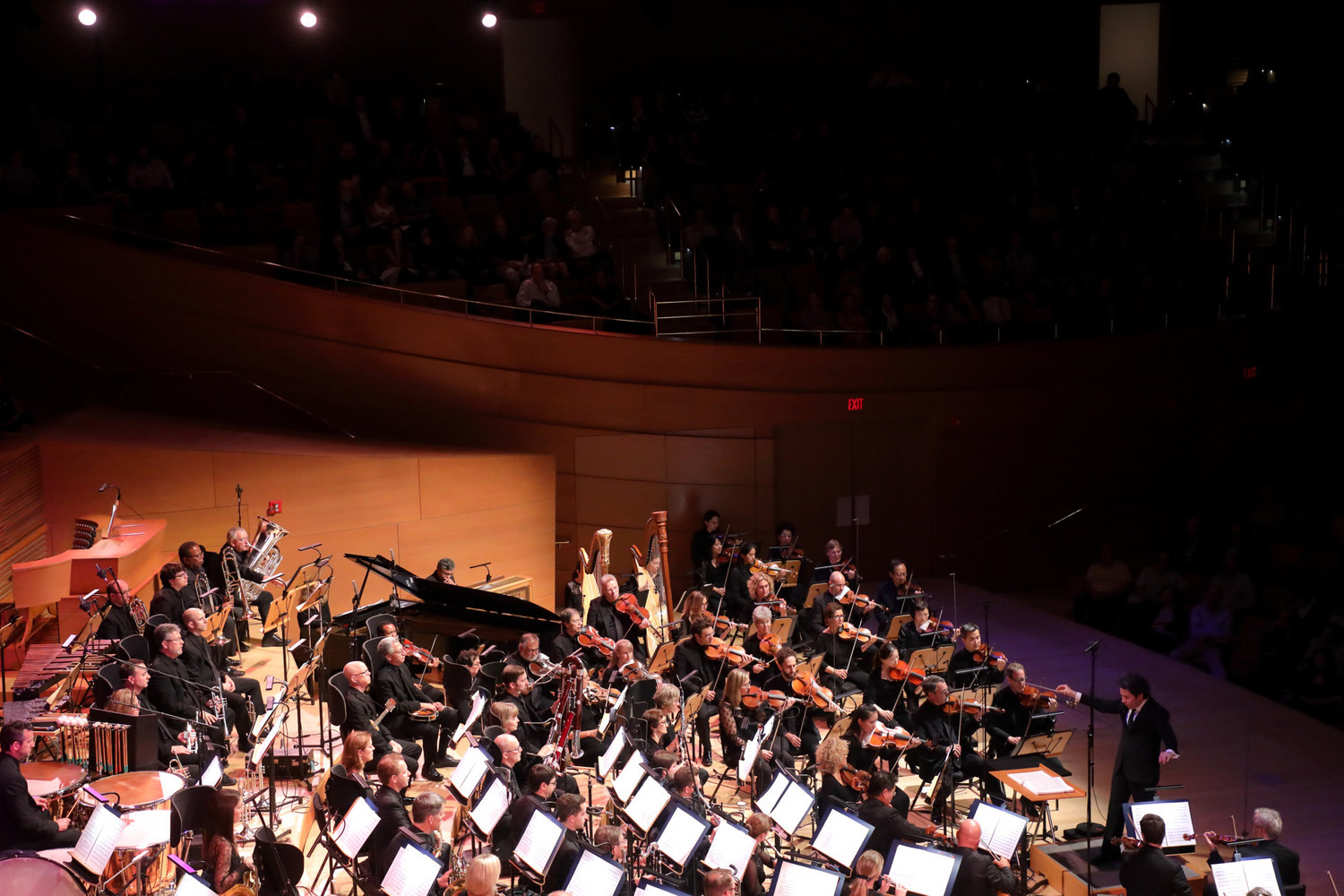
Hard to compare any other performance to this one. "Revisited," meaning reverse role changes that were made in the casting of this, putting another dimension into significance from the original version, plus updated costuming and scenics, and "Rejoiced," because it was performed, live, in front of your eyes and ears, by The L Philharmonic and The L A Dance Project, at The Walt Disney Concert Hall in Downtown Los Angeles, California.
There were intermittent gems of dance sections, where the dancers were either live on stage or on live film transferred to a screen shown behind the orchestra, when they were moving through the interior and the outside gardens that were lively, purposeful and beautiful to watch unfold. Always moving the plot along, they told the story, without words, through their movements, as the orchestra played the glorious, complicated score. 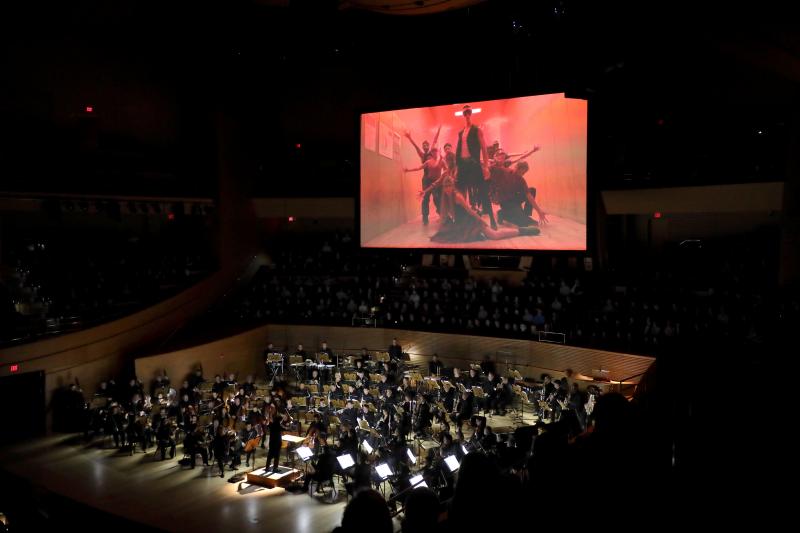
As an orchestral assignment, this is one tough mission to accomplish. The first Act alone, is over an hour, before the one intermission. At the rate and sharp focus needed to play an instrument for that long a period of time, especially playing Prokofiev, it's remarkable in itself, and when you hear them, live, playing it, it is almost a job for you ~ trying to absorb all the sounds, pitches and constantly changing tempos into your consciousness. A truly enriching experience.
The music was exquisite to listen to, and watch being played, with so much accuracy and verve. The acoustics are, top-notch, as you would expect. The score, in total, is 130 minutes long. It is a most difficult piece, not only endurance wise, but because of the amount of difficulty in the execution of it. The impact that orchestrated, and conducted, most specifically, by Gustav Dudamel, performed music can have is enormous. 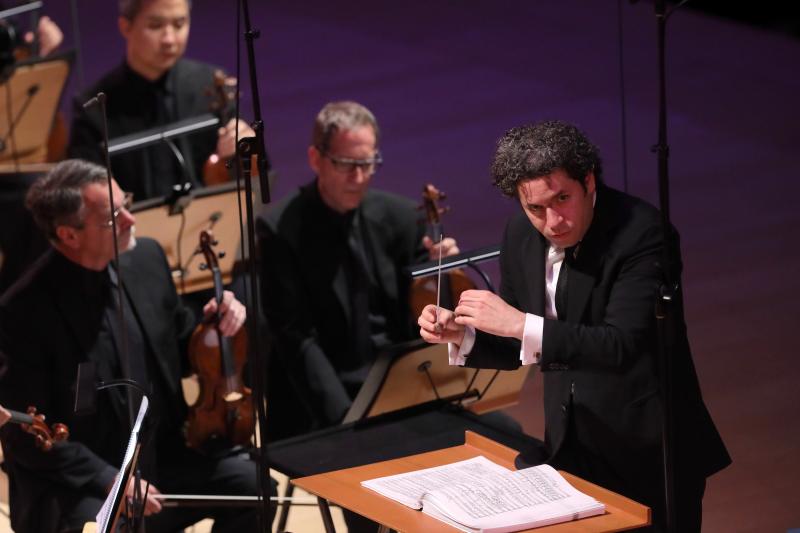 Dudamel (Music and Artistic Director) puts his whole being into conducting. You feel both the intensity and the gentleness ooze out of him, watching his body language change from section to section. Almost every instrument in the orchestra had solos and/or were featured in a duet, et al, with this most intricate and classically rich score. The orchestra's level of expertise is given a superb showcase with this piece.
Dudamel (Music and Artistic Director) puts his whole being into conducting. You feel both the intensity and the gentleness ooze out of him, watching his body language change from section to section. Almost every instrument in the orchestra had solos and/or were featured in a duet, et al, with this most intricate and classically rich score. The orchestra's level of expertise is given a superb showcase with this piece.
The dancers were lithe, intense, powerful and gentle in their portrayal of the scenes from this love story, and leading up to the final enactment mixing dance styles together presented an interesting outcome, choreographically. It complimented the updating of the entire ballet. Not only did they use the large lip of the the proscenium in front of the orchestra to dance, as street scenes, but all the interior and exterior stairways, walkways and gardens, and halls and rooms on the inside of the building. 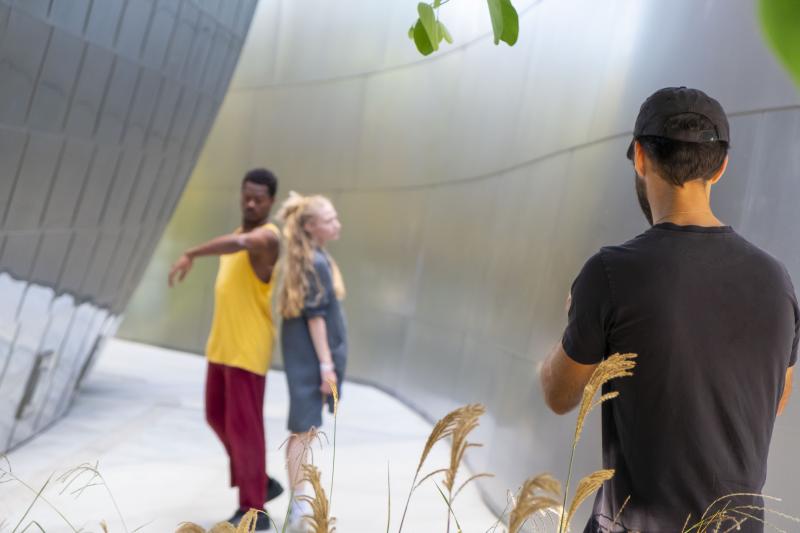 And not only were there eight ensemble dancers, and the three leads, but the most innovative live camerawork that was as much part of the choreography as were the dancers steps and moves.
And not only were there eight ensemble dancers, and the three leads, but the most innovative live camerawork that was as much part of the choreography as were the dancers steps and moves.
Sections of the ballet were blended together by a hand-held cameraman, who happened to be Benjamin Millepied, the innovative Artistic Director and Choreographer of The L A Dance Project, who picked up the action we were viewing on stage, and, following one or more dancers, filming the entire time as they made their way up and down stairs on either side of the orchestra that took them running thru hallways and different rooms backstage,
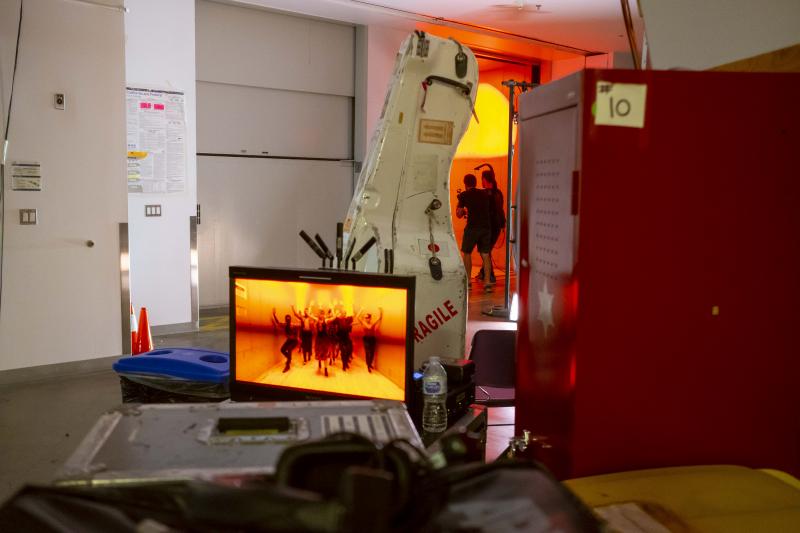
inside the building itself, stopping occasionally to dance and enact part of a scene. The cameraman becomes one of the dancers, but shows it's own perspective, and what is being filmed by him live is then transmitted directly to the huge screen behind the orchestra on stage so we don't miss a moment or a beat; wherever the dancers are physically; we instantly see the action much larger, on screen. Focusing tightly with his lens on the dancers gives one a very up-close, personal view of the scenario. It is even more exciting with the driving force of the music as everything unfolds. I don't think anyone else, BUT the choreographer could have made this work so well. Knowing the 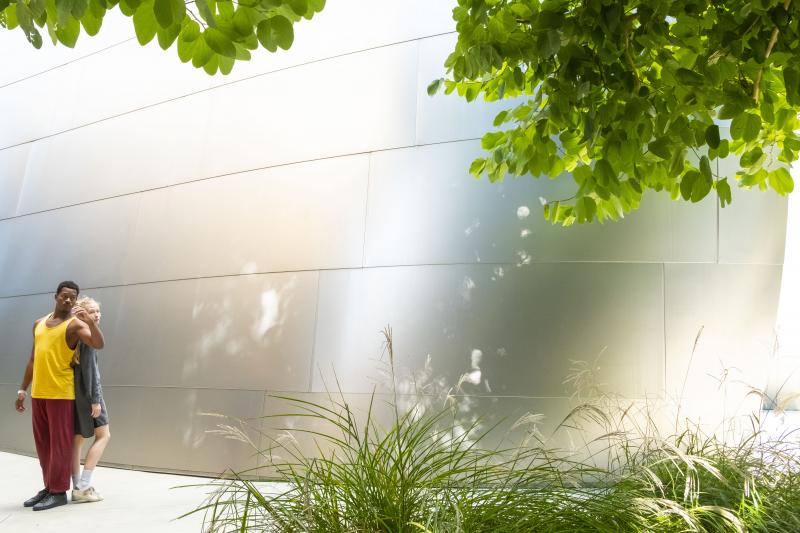 choreography like the back of his hand, and being the director, it is really his innate vision he brings to life. It actually opens up a whole new way of staging and storytelling.
choreography like the back of his hand, and being the director, it is really his innate vision he brings to life. It actually opens up a whole new way of staging and storytelling.
The score is so descriptive, it almost writes the choreography needed. The dancers utilized the many spaces they were working in, spaces that would not have been available to them on a regular stage, such as the areas on the outside of the several-storied Walt Disney Music Hall; the gardens, the actual exterior walls of the building 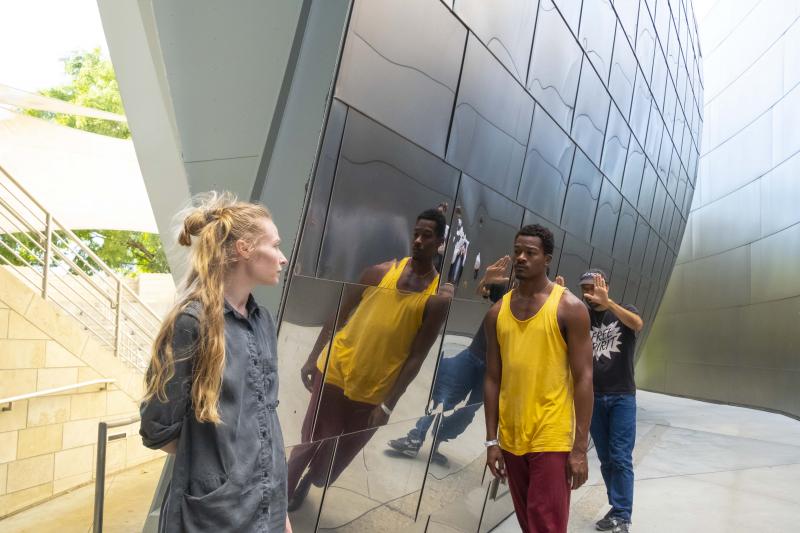 that slant and angle geometrically. We were able to follow every moment through the eyes of the camera lens. It has been called "site-specific choreography," as far as locations go, and this performance took things another step further in uniting stage work and live-filmed alternate locales together.
that slant and angle geometrically. We were able to follow every moment through the eyes of the camera lens. It has been called "site-specific choreography," as far as locations go, and this performance took things another step further in uniting stage work and live-filmed alternate locales together.
Fun and interesting costuming, wonderful and appropriate lighting for each section of the dance, beautifully danced by the company, and a feeling of newness (although timeless) to this tale of unrequited love.
Juliet was played by Patricia Zhou; Romeo by Rachelle Rafailedes, and Tybalt by Nathan B. Makolandra, on the evening I saw the performance, and all were more than up to the task. A beautiful collaboration that I hope will continue and evolve with dance and music.
There were not many photos available of what we saw during the performance when the dancers were being followed, to use in this article, and I assume that might be because it would lose some of the impact of how we saw it live. They will have to do a return engagement so that more audiences can get the full effect of Mr. Millepied's vision.
Lighting Designer: Francois-Pierre Couture; Artistic Director/Choreographer: Benjamin Millepied; Ensemble Dancers: Doug Baum, Anthony Lee Bryant, Aaron Carr, David Adrian Freeland, Jr., Mario Gonzalez, Madison hicks, Daisy Jacobson, and Janie Taylor.
Photos courtesy of Jonathan Potter, Craig Mathew/Mathew Imaging,
Reader Reviews

Videos

